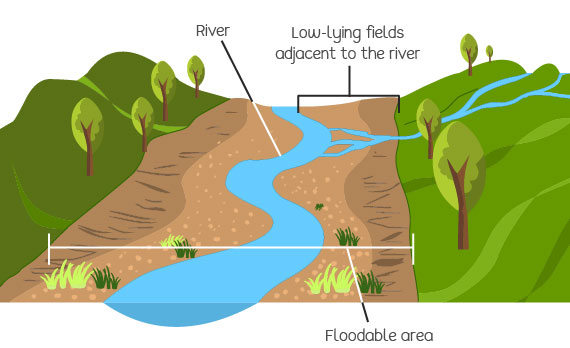- Flooding
Which areas are more likely to flood?
From the causes of floods and the types that we just read about, you can tell that floods are more likely to occur in some areas than others.

Generally, the natural behavior of water (and flowing water) is that it moves from higher ground to lower ground. This means if there is a higher ground adjacent to the lower ground, the lower ground is a lot more likely to experience floods.
Additionally, anywhere that rains fall, floods can develop. This is so because anytime there are more rains, bringing more water than can be drained or absorbed by the soil, there is a flood potential.
In many cities, buildings are springing up in places where they have not been authorized. Some of these buildings are placed in waterways. Other places also have very bad and chocked drainage systems. The danger is that, with the rains, water will find its level if it cannot find its way. The result is flooding and your home could be submerged.
Any plain low-lying area adjacent to a river, lagoon, or lake is also more likely to have floods anytime the water level rises. This includes coastal areas and shorelines, as seawater can easily be swept inland by strong winds, tides, and tsunamis.
